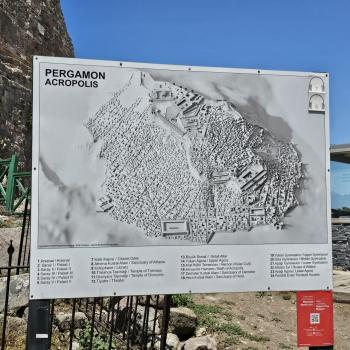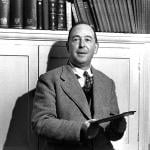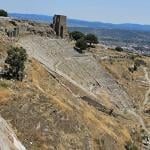“THE PRINT OF THE NAILS”
—John 20.27
[Preached seventeen times from 4/2/72 at Langley Park to Remoder in 1994]
The resurrection of Jesus Christ is the most vital of all truths. Without it, there
would be no Christianity at all. But like all great Christian truths, it is a very dangerous
one. As soon as you speak of justification by faith alone, someone will begin to say:
“Then it doesn’t matter how I live.” And as soon as you say, “Jesus is alive, no mere
figure of history but a living person in the world today,” someone will begin to stir his
imagination and make of the risen Christ an imaginary person, created according to
his own taste.
This is where, it seems to me, we owe an enormous debt to Thomas. The poor
man comes in for a lot of criticism—he is dubbed a doubter, he is rebuked for failing
to be with his colleagues when Jesus first appeared to them. I have just looked up
some sermons of Luther’s, but even he will only speak of Thomas as an unbeliever,
converted by the gracious readiness of Christ to come back specially for him. And I
daresay this is true. But what exactly do you mean by “the risen Christ”? Who was it
that encountered the disciples on that first Easter day and again a week later?
From very early Christian times people have put their imaginations to work and
have produced an airy unsubstantial figure onto which they could simply pin their
own fancies. Look at the pictures artists have painted. Sometimes he looks like a ghost;
sometimes he looks like a triumphant Roman emperor about to mete out rough justice
to his enemies. We owe it to Thomas and St. John’s record, that we know quite
precisely what the risen Jesus was and is like. “I will not believe,” said Thomas, “in this
airy supernatural figure who passes through locked doors unless I see in his body the
wounds of crucifixion and that will prove to me that it is the same Jesus that I knew.”
And Jesus himself acknowledges the justice of the request—“look at my hands, look at
my side.” You can be quite certain who it is. And from this we know the answer.
THE RISEN JESUS IS THE HISTORICAL JESUS
May I put it this way? The parts of the New Testament that really prove the resurrection
are not Matthew 28, Mark 16, Luke 24, and John 20.21. These are the stories of the
first Easter. Of course I am not depreciating them; they are of great value. But taken in
themselves and on their own, they could be wrong, they could be mistaken, they could
be deliberate fiction, invented to bolster up a case. The parts of the New Testament
that prove the resurrection are Matthew 1–27, Mark 1–15, Luke 1–23, and John 1–19
for these were raised up with Jesus. If nothing had happened at the first Easter, if Jesus
had simply stayed dead in the grave, he should never have had these stories of his life
and teachings. There might have been a few scattered references in the Talmud (as
in fact there are) but (as David Flusser says in the article in the Encyclopedia Judaica
summarized in this morning’s Times), the events of the Gospel were not really very
close to the major events of the day. It is because Jesus rose from the dead that we have
the Gospel records. In other words, the risen Christ is the historical Jesus and there
is no other.
So the Christ with whom we have to do today is none other than the Christ of
the Gospels. How hard it seems to be for people to take this seriously! How much of
our worship for example takes liturgical form; somehow we don’t seem to be hearing
him rightly if our religion does not include a high proportion of attendance at the
holy place, with a liberal sprinkling of hymns and prayers. But the Jesus of the Gospels
did not think much of people who used long prayers as a sort of smoke screen for
a life that would not bear examination, and he made it clear that merely to address
him as “Lord, Lord” would not get one very far. Don’t misunderstand this; he himself
attended synagogue, and would spend a whole night in prayer. I am not asking you to
cut down your Church going or your prayers. I’d rather you stepped them up. But see
them not as ends in themselves but as means to an end, the end of concrete obedience
in the working world.
Again how slow we are to take Jesus seriously as he notoriously was—the friend
of tax collectors and sinners. We are also to take this seriously in regard to ourselves.
We do not take seriously his forgiveness of our sins, the one in whose presence the
prodigals find their way home. We think we have to achieve some level of virtue and
religion before we can be admitted to his presence. We are sometimes slow to take this
equally seriously with regard to others and the gulf grows between the Church and
the world, so that we love the power to communicate with those who have not been
brought up with us, to speak the language of Zion. I know this is not easy. There has to
be a gulf between the Church and the world, just as Jesus never excused or condoned
evil. He would not condemn to punishment the woman caught in adultery but he did
say to her “go and sin no more.” It was when he stood with her in mercy that he could
bid her to break with her past and lead a new life. And so one could go on, but it will
be best to move to the climax in the next part.
THE RISEN JESUS IS THE CRUCIFIED JESUS
“I want,” said Thomas, “to see the print of the nails, the wound of the spear. No other
Christ but the crucified one is any good to me.” In this, Thomas was right. Good Friday and Easter Sunday belong together. The Risen Christ is not a lighter happier version of the crucified Christ. It is Jesus who died on the cross, was raised up, and now lives forever. This means that the Cross is not something over and done with; on the contrary the Cross is there forever at the head of Christian faith and life.
In recent years, theologians have been raising a pair of terms that Luther first
brought into use: the theology of glory and the theology of the Cross. Provided you
understand them, they are a useful pair to know. By a theology of glory, Luther meant
a way of climbing up to heaven where God dwells in glory. He knew, and we know
still, all kinds of ways that are used for this. There is the rational way: let us work out
the truth of God by reason, and climb up to him by exercising our minds. There is the
mystical way: let us abstract ourselves from the material world and by contemplation,
and mysticism, and religious experience make our way up to God in heaven. There is
the ecclesiastical way: let us have the right kind of Church with the right kind of ministers
and the right kind of sacraments so that if we keep all the rules we may find our
way to God. There is the moral way: let us keep all the rules we can find and think of,
make ourselves perfectly good, and then God will accept us in glory. But over against
all this the theology of the Cross says, “you do not need to climb up to glory, God has
come down and is already there in the wounds of Jesus.”
The Resurrection means that this has not stopped being true, rather that it is forever
true. The way to God is not through our achievements—mental, moral, mystical,
ecclesiastical. The way to God is Jesus. It is in him, in the Son of God who loved me
and gave himself for me that I find refuge and pardon and life; there that I encounter
the living God who so loved the world that he gave his only Son. But when I meet him
I meet him as the Risen One. That is to say, if I am content to die with Christ, I find
that he proves to be the living Christ. If I am ready to carry about the dying of Jesus, I
find that the life also of Jesus is manifested in me. You find your way to God in Christ
crucified, and having done so you find that he is Christ risen. This leads to one more
point. Thomas was convinced, the doubter sure he found the truth, utters the confession
of faith that is the climax of the Gospel.
MY LORD AND MY GOD
But I do not intend to develop this as Christology. I want to take it rather in its setting,
as the practical test of Christian life. There are in fact two things to say. First, nothing is
really Christian that does not have Christ as its center. This is the test of all our Church
activities and of all our private lives. It is not—we saw this earlier—a matter of using
the right language, of saying, “Lord, Lord.” It is often not a matter of using language at
all. But it is a matter of practical obedience. What I cannot do under the obedience of
Christ, I cannot call Christian, and perhaps I had better not do it at all. This does not
mean that I must make the whole of my life in the ordinary sense—“religious.” It does
mean that what I cannot offer to him, as part of my service to the Lord, stands outside
my Christian duty—even if I do it on Church premises. But how do I know? This leads
to the second point. Thomas has provided the test.
How do I know the mind of Christ? How do I know what serves him and what
does not? I must look for the print of the nails. There is a story of one of the saints—St.
Martin I think—that one day Satan appeared to him, cunningly disguised as Christ.
He wore all the traditional trappings of the glorified Lord and commanded Martin to
worship him. But Martin was suspicious. He looked closely at the upraised imperious
hand. “No,” he said, “I do not see the mark of the nails.”
Easter Day stands, rightly, for all that in glorious, triumphant, victorious, splendid,
exalting, in Christian faith and life. It is right and proper that it should. And I
would not say one word to take the glory and the glow out of it. “This is the day that
the Lord hath made; we will rejoice and be glad in it.” But before you are carried
away—look for the print of the nails. Look for them in your own experience; look for
them in your moral life; look for them in the Church. It is only to the one who bears
these marks that you may say, “my Lord and my God.” And it is only by sharing the
marks that you can truly serve him.












